Truck Unloading Solution
Home > Truck Unloading Solution
Choosing the right Unloading Conveyor Solution is essential for businesses aiming to reduce manual labor, minimize product damage, and accelerate the flow of goods from trucks or containers into storage or processing areas.
In modern logistics and warehousing, the efficiency of unloading operations can make or break your supply chain. Choosing the right Unloading Conveyor Solution is essential for businesses aiming to reduce manual labor, minimize product damage, and accelerate the flow of goods from trucks or containers into storage or processing areas. This guide explores the core types of unloading conveyors, their unique features, compatibility, and how to select the best system for your needs.
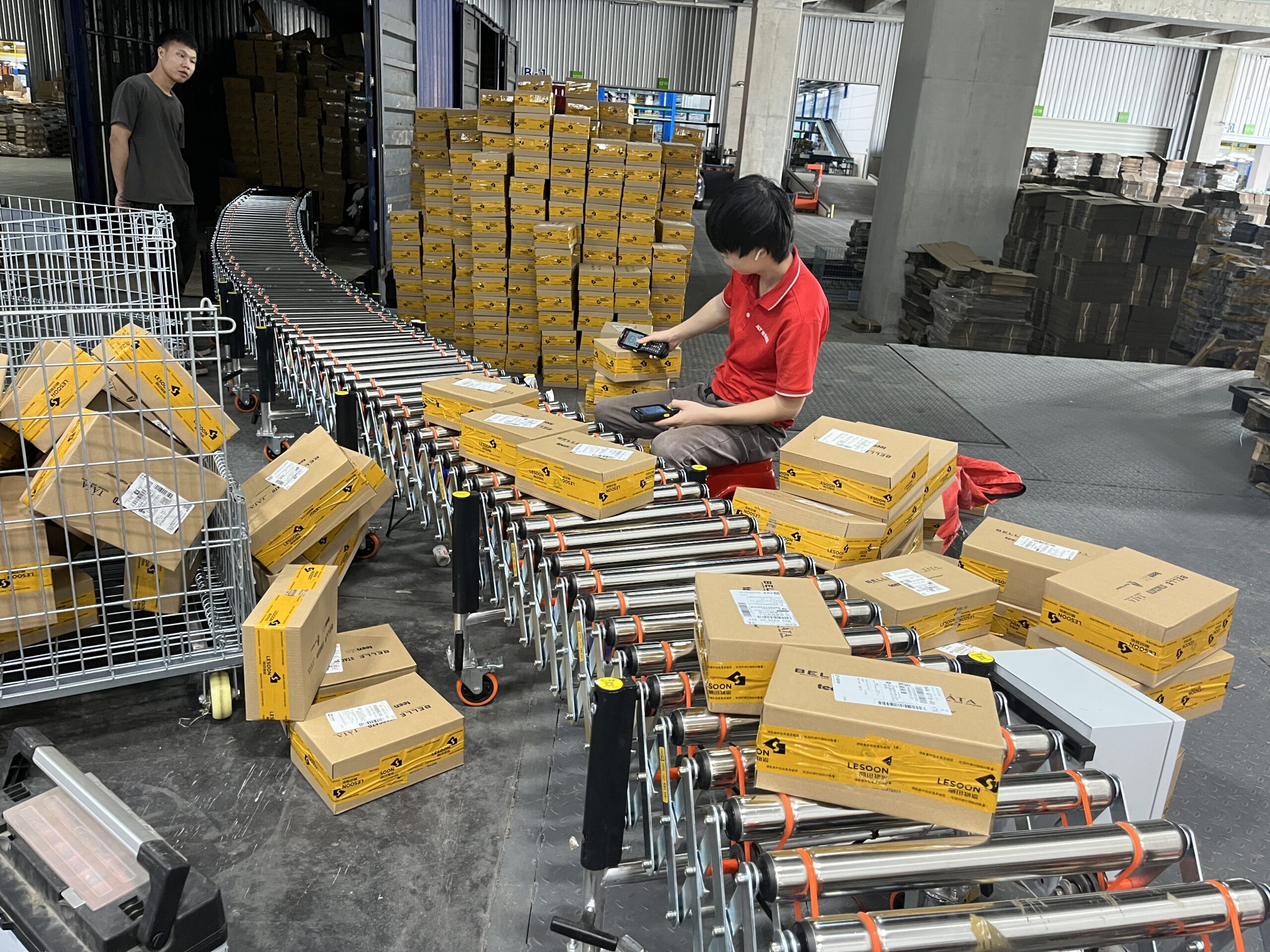

What Is an Unloading Conveyor Solution?
An Unloading Conveyor Solution is a modular system designed to move goods efficiently from vehicles or containers into warehouses or distribution centers. These solutions are tailored for loading and unloading tasks, not for production lines or automated sorting. They are engineered for flexibility, durability, and ease of integration with existing warehouse systems, ensuring that even high-volume operations can maintain speed and safety.
Key Types of Unloading Conveyors
Telescopic Conveyor
Telescopic Conveyors are the gold standard for high-volume, fixed-dock unloading. Their extendable design allows the conveyor to reach deep into containers or trucks, minimizing the distance workers need to carry goods by hand.
| Feature | Details |
| Max Extension | Up to 17 meters (5-section model) |
| Load Capacity | 80 kg/m² |
| Speed | 10-40 m/min (adjustable) |
| Height Adjustment | Yes (hydraulic lift optional) |
| Mobility | Fixed (can add wheels for repositioning) |
| Best For | Large logistics centers, fixed docks |
- Not compatible with Hydraulic Conveyor for combined use.
- Can be integrated with Powered Roller Conveyor at the dock end for seamless transfer from warehouse to vehicle.
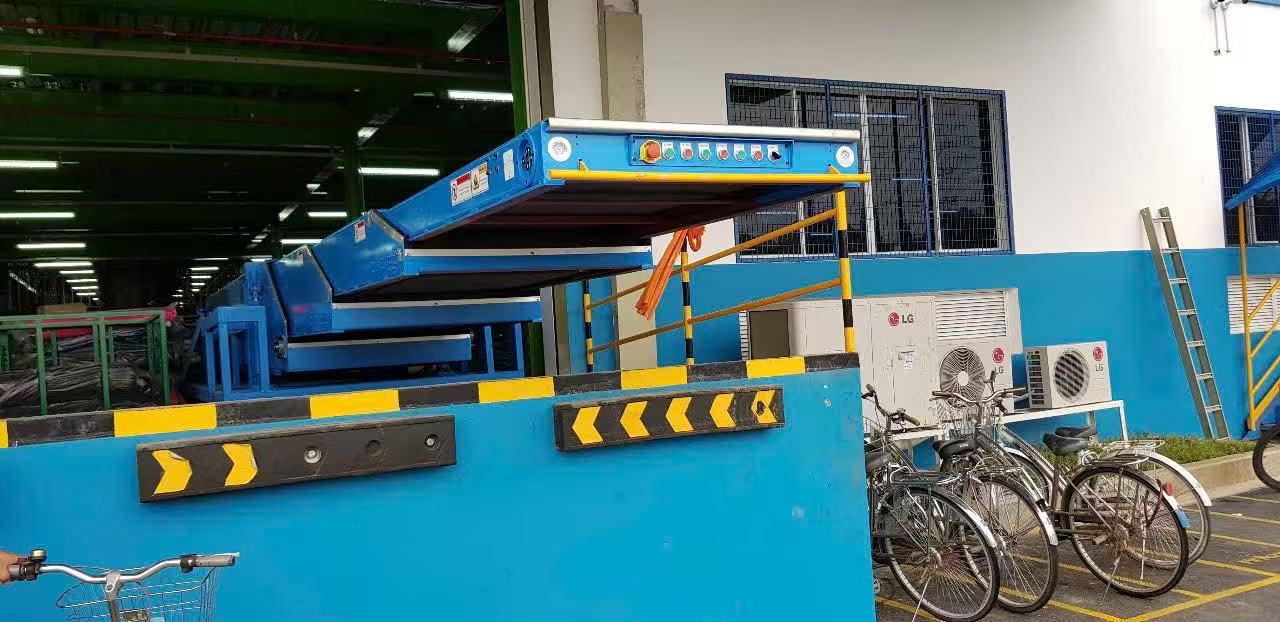

Hydraulic Conveyor
Hydraulic Conveyors are designed for sites without fixed loading docks. Their adjustable incline bridges the height difference between ground level and truck beds, making them ideal for direct warehouse-to-vehicle transfer.
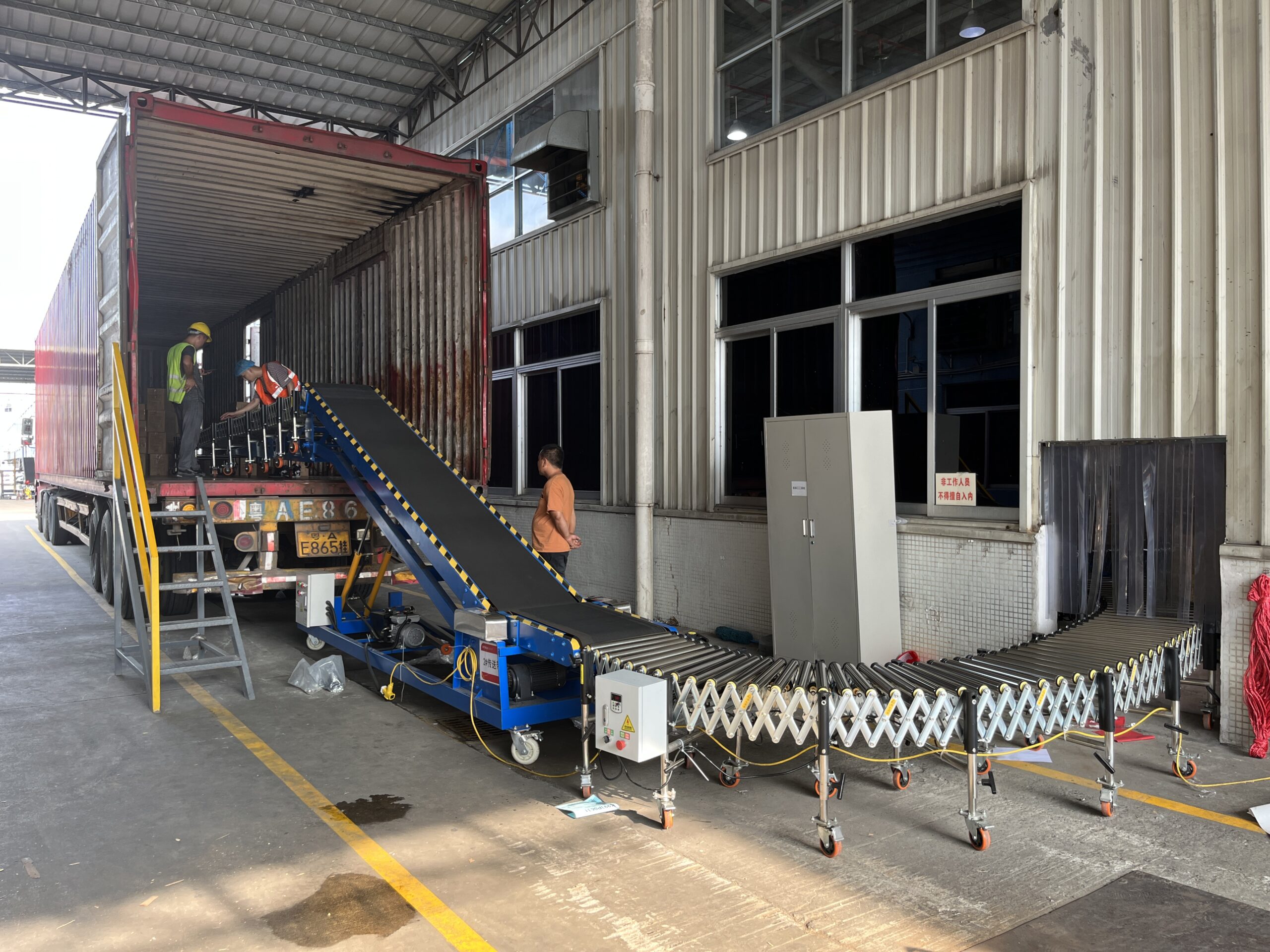

| Feature | Details |
| Length Options | 3700mm to 7900mm |
| Height Adjustment | 700mm to 2400mm (hydraulic) |
| Load Capacity | 50-80 kg/m |
| Mobility | High (heavy-duty casters) |
| Best For | Warehouses without docks, mobile needs |
- The upper end can support various roller conveyors (except Micro model).
- Cannot be combined with Telescopic Conveyor.
- Compatible with Gravity Roller, Powered Roller, and Rubber Roller Conveyors for extended reach into vehicles.
Powered Roller Conveyor
Powered Roller Conveyors offer flexible, motor-driven transport for a wide range of goods. They are retractable, height-adjustable, and can be easily moved between work areas.
- Available in O-shaped belt and multi-wedge belt drive types.
- Load capacity: 80-100 kg/m depending on model.
- Can be connected in series for longer lines.
- Integrates with both Telescopic Conveyor (at the dock) and Hydraulic Conveyor (on the upper support frame, except Micro model).
- Not suitable for use as a production line conveyor.
Powered Rubber Roller Conveyor
Specially designed for soft packaging, the Powered Rubber Roller Conveyor features PVC-coated rollers for higher friction and gentler handling.
- Load capacity: 120 kg/m.
- Best for plastic bags, paper bags, and soft packages.
- Can be used on the upper support of Hydraulic Conveyor (except Micro model).
- Not compatible with Telescopic Conveyor.
Gravity Roller Conveyor
Gravity Roller Conveyors use the force of gravity to move goods down a slope. They are simple, cost-effective, and require no power.
- Available in 50mm and 38mm roller diameters.
- Load capacity: 50-80 kg/m.
- Can be used on the upper support of Hydraulic Conveyor (except Micro model).
- Not suitable for direct integration with Telescopic Conveyor.
Gravity Skate Wheel Conveyor
Lightweight and highly extendable, Gravity Skate Wheel Conveyors are perfect for temporary or mobile unloading needs.
- Stretch ratio up to 1:5.
- Load capacity: 50 kg/m.
- Best for flat-bottomed, lightweight goods.
- Can be used on the upper support of Hydraulic Conveyor (except Micro model).
- Not compatible with Telescopic Conveyor.
How to Choose the Right Unloading Conveyor Solution
Selecting the best Unloading Conveyor Solution depends on your site layout, types of goods, and operational needs. Here are some practical considerations:
- Do you have a fixed dock?
If yes, Telescopic Conveyor is ideal. If not, consider Hydraulic Conveyor.


Loading Dock or Loading Platfrom - What are your goods like?
For soft packaging, choose Powered Rubber Roller Conveyor. For standard cartons, Powered Roller or Gravity Roller Conveyors are suitable.

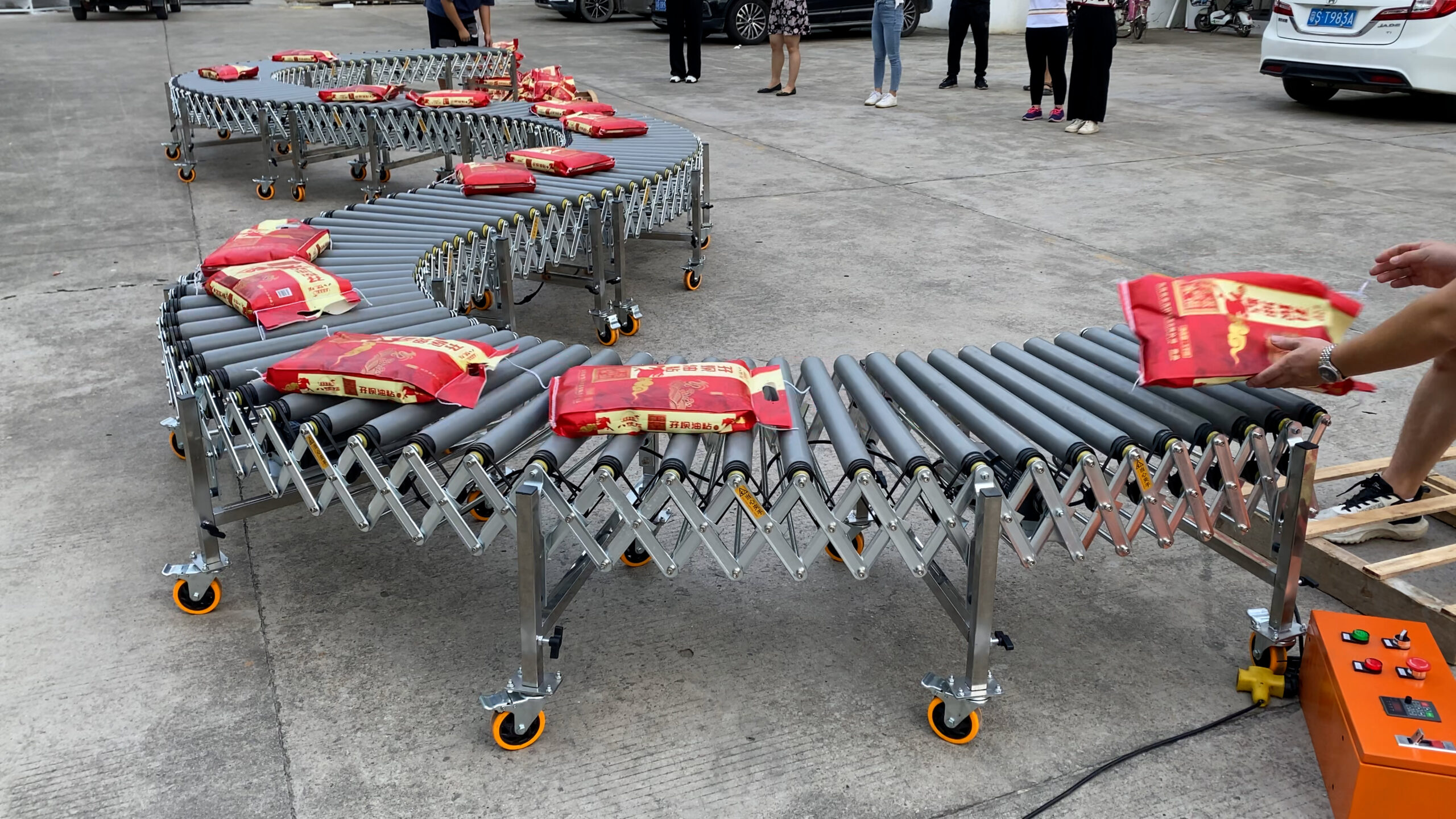
Powered Rubber Roller Conveyor Transporting Bagged Rice - How much flexibility do you need?
For frequent reconfiguration, Gravity Skate Wheel Conveyor offers the most mobility. - Integration with existing systems:
All Naili Conveyor products are designed for easy integration with warehouse systems, but always check compatibility (see below).
Product Compatibility and Integration
| Conveyor Type | Can Combine With Telescopic | Can Combine With Hydraulic | Can Combine With Each Other |
| Telescopic Conveyor | – | No | Powered Roller (at dock) |
| Hydraulic Conveyor | No | – | Gravity/Powered/Rubber Roller (on upper support, except Micro) |
| Powered Roller Conveyor | Yes (at dock) | Yes (on upper support) | Yes |
| Powered Rubber Roller Conveyor | No | Yes (on upper support) | Yes |
| Gravity Roller Conveyor | No | Yes (on upper support) | Yes |
| Gravity Skate Wheel Conveyor | No | Yes (on upper support) | Yes |
- Telescopic and Hydraulic Conveyors cannot be used together.
- Only the Small, Medium, and Large Hydraulic Conveyor models support upper frame mounting of other conveyors.
- All roller and skate wheel conveyors can be extended by connecting multiple sections.
Real-World Application Scenarios
- Large logistics centers:
Use Telescopic Conveyor at fixed docks, with Powered Roller Conveyor connecting the warehouse to the dock. - Warehouses without docks:
Deploy Hydraulic Conveyor with a Gravity or Powered Roller Conveyor on top to reach deep into trucks or containers.

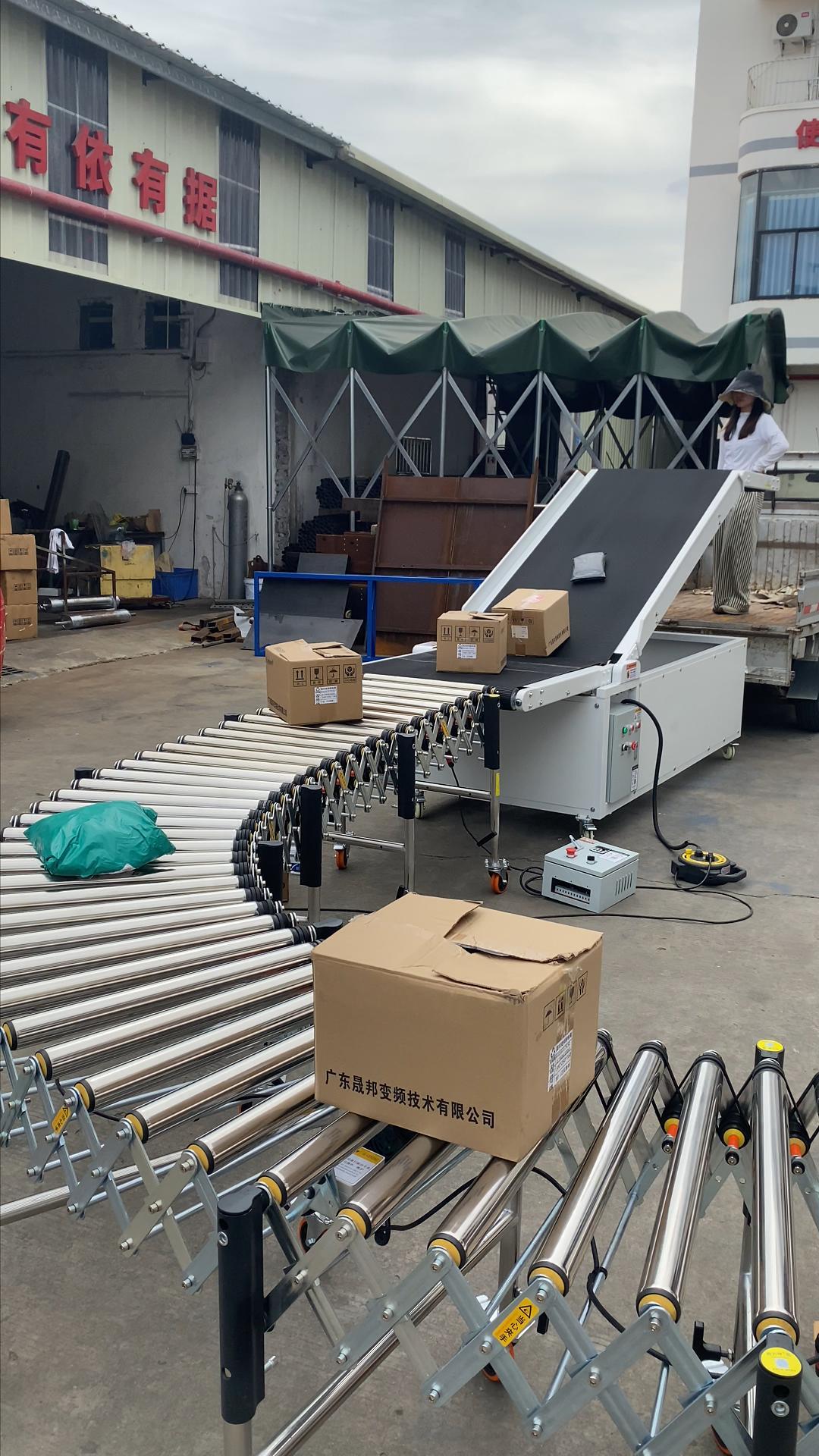
Hydraulic Conveyor – Micro – 3700 mm Length - Temporary or mobile unloading:
Gravity Skate Wheel Conveyor is ideal for pop-up operations or sites with limited space. - Soft packaging handling:
Powered Rubber Roller Conveyor ensures gentle, slip-free transport of bags and soft parcels.
Maintenance and Durability
All Naili Conveyor products are built for long-term use (5-10 years under normal conditions). Maintenance is straightforward:
- Regularly check and tighten screws and wiring.
- Clean rollers and lubricate bearings as needed.
- For powered models, inspect belts and motors periodically.
- Hydraulic systems require oil level checks and occasional seal replacement.
FAQs
Can I use Telescopic and Hydraulic Conveyors together?
No, they are not compatible for combined use.
What is the best solution for soft packaging?
The Powered Rubber Roller Conveyor is designed for soft packaging and offers high friction and gentle handling.
How do I extend the length of my conveyor system?
You can connect multiple sections of the same type (roller or skate wheel) to reach the desired length.
Do I need professional training to operate these conveyors?
No, the systems are user-friendly and require only basic instruction.
Can the conveyors be integrated with my existing warehouse system?
Yes, Naili Conveyor products are designed for easy integration, but always check compatibility for specific combinations.
Conclusion
Choosing the right Unloading Conveyor Solution is crucial for efficient, safe, and cost-effective warehouse operations. By understanding the unique features and compatibility of each conveyor type, you can design a system that fits your specific needs—whether you’re handling cartons, bags, or mixed goods, and whether your site has a fixed dock or not. For more details on product specifications and integration, see our Unloading Conveyor page.

